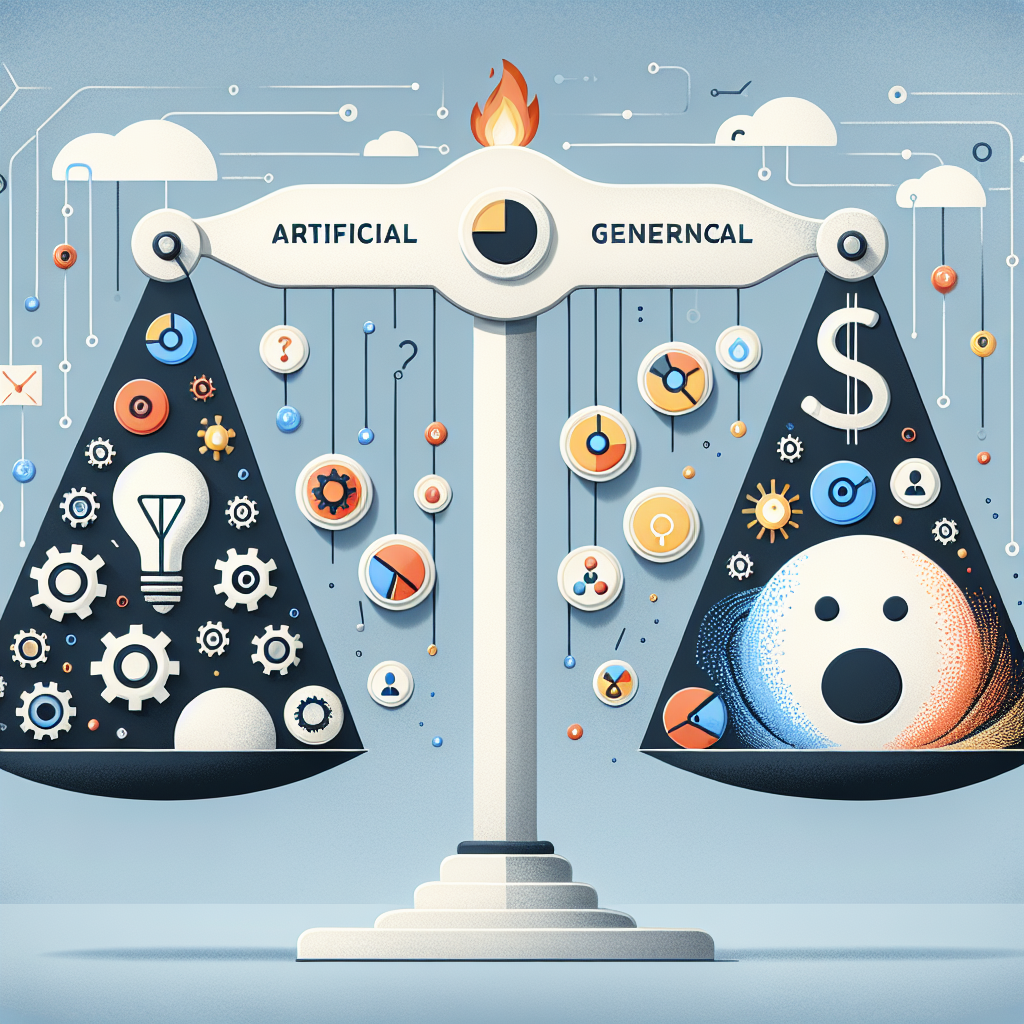As technology continues to advance at a rapid pace, the concept of artificial general intelligence (AGI) is becoming increasingly prevalent in discussions about the future of technology. AGI refers to a form of artificial intelligence that possesses the ability to understand, learn, and apply knowledge in a manner similar to that of a human being. While AGI has the potential to revolutionize numerous industries and improve our quality of life in innumerable ways, it also poses a number of risks that must be carefully considered. In this article, we will explore the potential risks and benefits of AGI, as well as address some frequently asked questions about this emerging technology.
Benefits of AGI
One of the primary benefits of AGI is its potential to significantly enhance human productivity and efficiency across a wide range of industries. AGI has the ability to quickly analyze vast amounts of data, identify patterns, and make complex decisions in a fraction of the time it would take a human to do so. This can lead to advancements in fields such as healthcare, finance, manufacturing, and transportation, where AGI can help streamline processes, improve accuracy, and drive innovation.
AGI also has the potential to revolutionize the way we approach scientific research and discovery. By leveraging the power of AGI, scientists and researchers can accelerate the pace of discovery in fields such as medicine, materials science, and climate research. AGI can help identify new drug candidates, predict the behavior of complex systems, and develop innovative solutions to some of the world’s most pressing challenges.
Furthermore, AGI has the potential to improve our quality of life by enhancing our daily experiences and interactions with technology. For example, AGI-powered virtual assistants can provide personalized recommendations, automate routine tasks, and improve accessibility for individuals with disabilities. AGI can also enhance our entertainment experiences by creating more immersive and interactive content, such as virtual reality games and personalized content recommendations.
Risks of AGI
Despite its numerous benefits, AGI also poses a number of risks that must be carefully considered. One of the primary concerns surrounding AGI is the potential for it to outperform human intelligence and autonomy, leading to a loss of control over the technology. If AGI were to surpass human intelligence, it could potentially make decisions that are harmful or detrimental to humanity, either intentionally or unintentionally. This could result in a wide range of negative outcomes, from job displacement to existential threats to the future of humanity.
Another significant risk of AGI is the potential for bias and discrimination in decision-making. If AGI is trained on biased data sets or programmed with biased algorithms, it could perpetuate and amplify existing biases in society. This could lead to discriminatory outcomes in areas such as hiring, lending, and criminal justice, exacerbating social inequalities and injustices.
Additionally, there are concerns about the security and privacy implications of AGI. As AGI becomes more advanced and autonomous, it could pose a threat to cybersecurity by potentially being exploited by malicious actors to carry out cyber attacks or manipulate sensitive information. Furthermore, the widespread adoption of AGI could raise concerns about the privacy of individuals’ personal data and the potential for surveillance and monitoring on a mass scale.
FAQs about AGI
1. What is the difference between AGI and artificial narrow intelligence (ANI)?
AGI refers to a form of artificial intelligence that possesses the ability to understand, learn, and apply knowledge in a manner similar to that of a human being. ANI, on the other hand, refers to a form of artificial intelligence that is designed for specific tasks and lacks the ability to generalize or adapt to new situations. While ANI is limited in its capabilities, AGI has the potential to perform a wide range of tasks with human-like intelligence and autonomy.
2. How close are we to achieving AGI?
The timeline for achieving AGI is uncertain and highly debated among experts in the field of artificial intelligence. Some believe that AGI could be achieved within the next few decades, while others argue that it is still a distant goal that may never be fully realized. The development of AGI will depend on a variety of factors, including advances in technology, research funding, and ethical considerations.
3. What are some ethical considerations surrounding AGI?
There are numerous ethical considerations surrounding the development and deployment of AGI, including concerns about fairness, accountability, transparency, and privacy. It is important to ensure that AGI is developed in a way that respects human rights, promotes social good, and minimizes harm to individuals and society. Ethical guidelines and regulations will play a crucial role in guiding the responsible development and use of AGI.
4. How can we mitigate the risks of AGI?
To mitigate the risks of AGI, it is essential to prioritize safety, transparency, and accountability in the development and deployment of the technology. This includes implementing robust testing and validation processes, incorporating ethical considerations into design decisions, and promoting collaboration and dialogue among stakeholders. It is also important to establish clear regulations and guidelines for the responsible use of AGI to ensure that the technology is used in a way that benefits society as a whole.
In conclusion, AGI has the potential to revolutionize numerous industries and improve our quality of life in innumerable ways. However, it also poses a number of risks that must be carefully considered and addressed. By carefully weighing the benefits and risks of AGI, and taking proactive steps to mitigate potential harms, we can ensure that this transformative technology is developed and used in a way that benefits humanity as a whole.

